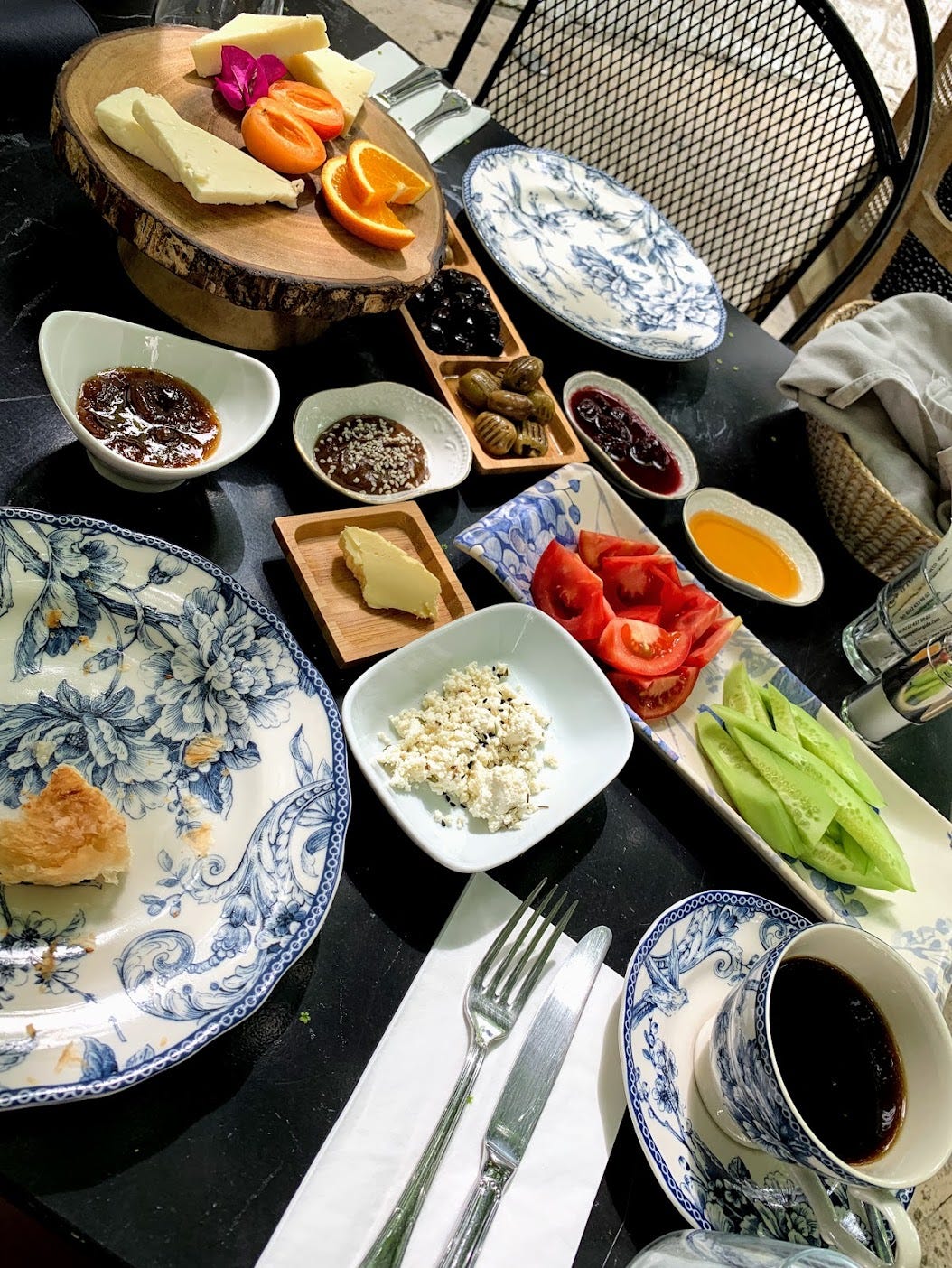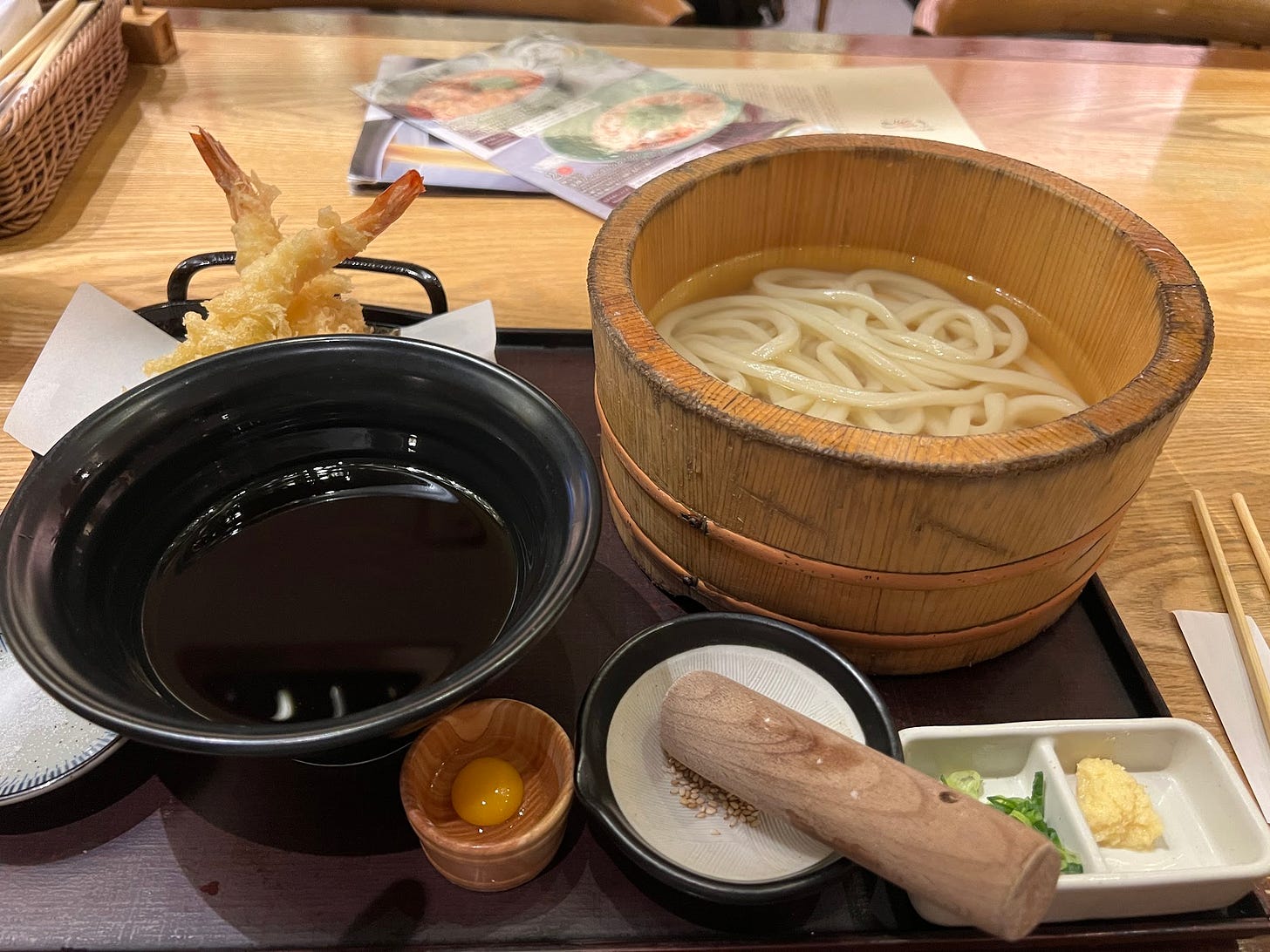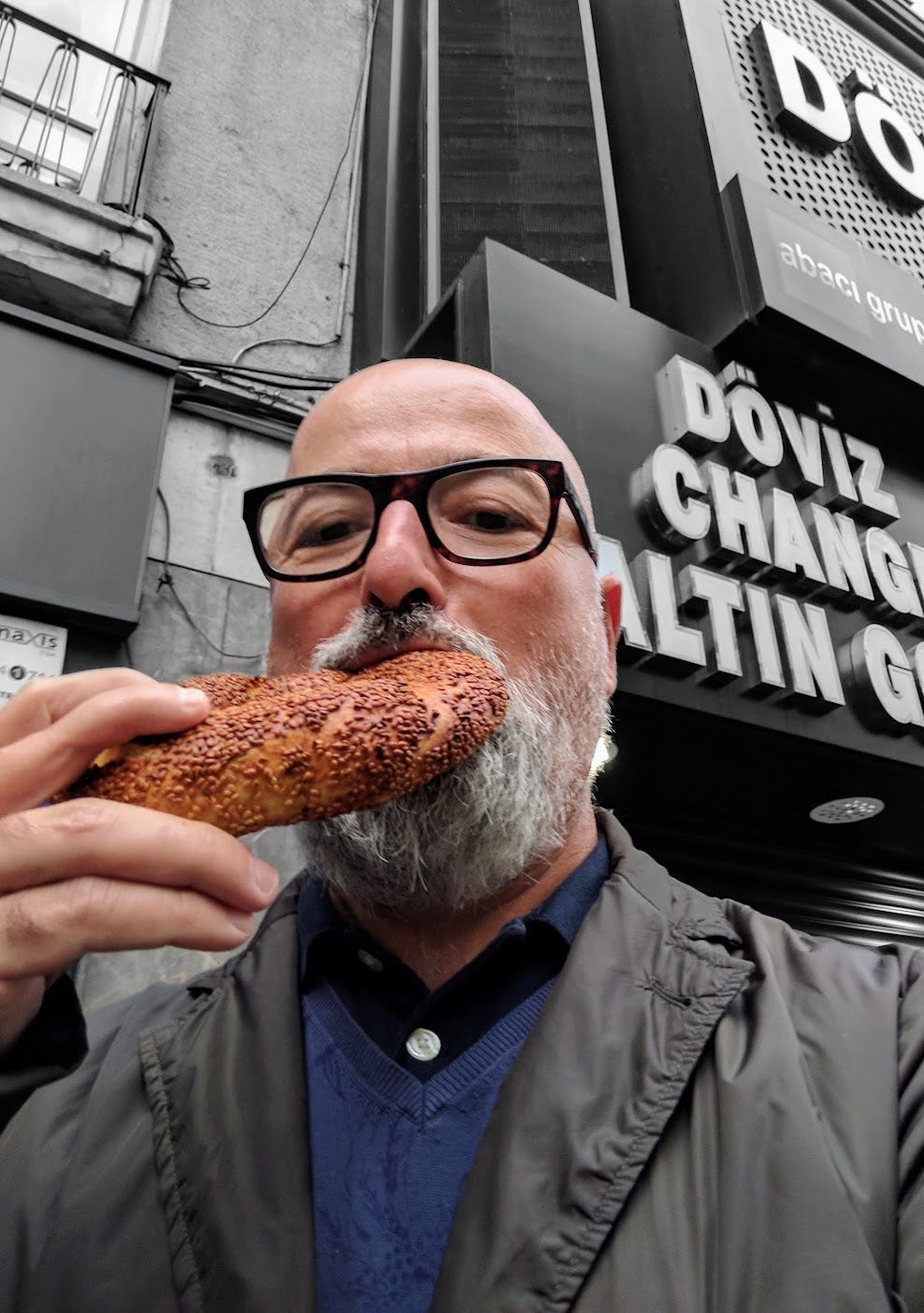One of the things I’m most looking forward to on my trip to Türkiye later this week is the full breakfast spread—tapas-like in its variety—where even the most modest versions include an array of dishes. It’s easy to lose track of time, especially if you're with friends or family, chatting and sampling everything from bold, cured meats like sucuk and pastırma, to savoury and sweet pastries such as poğaça, simit, and börek. Fresh vegetables and fruits are always on the table—tomatoes, chillies, cucumbers, and heaps of fresh herbs are essential—alongside the staples of a traditional Turkish breakfast: feta and black olives. And of course, I can’t forget menemen—eggs gently cooked and stirred into a base of fresh tomatoes and green chillies.
As someone who visits Türkiye every few years, I’ve noticed the breakfast table steadily expanding over time, with new dishes regularly being added to the spread. A friend recently mentioned sampling from 28 different plates during a single Turkish breakfast—it’s become almost a culinary event in itself.
I remember my childhood, when Mum would insist we eat a few olives and some feta—always essential—alongside soft-boiled eggs (rafadan yumurta) every morning before school. This was always accompanied by freshly brewed tea, served in those iconic, tulip-shaped glasses. She’d remind us of the importance of a solid breakfast, even as we resisted, our eyes barely open, longing for more sleep. I often wondered why we had to wake up in the dark, getting ready to catch the school shuttle that came all the way out to the farm—over 30 kilometres from town.
Living in various parts of the world, I quickly learned that breakfast reflects both the culture and climate of a place—and, like most things, it’s also shaped by trends and changing tastes over time.
Try explaining eggs for breakfast to a Spaniard! In a Spanish class once, I struggled to convince my teacher that I’d had an omelette (tortilla, in Spanish) for breakfast as part of a conversation exercise. She eventually replied, “But we eat tortilla for dinner in Spain,” and looked at me as if I were slightly odd. And indeed they do. A typical Spanish breakfast is just a coffee and a small pastry—usually a croissant or something similarly light. If you’re feeling indulgent, you might have a small sandwich with cheese or jamón, tucked into a baguette or its slimmer cousin, la flauta. Somehow, that keeps them going until lunch—which never begins before 2pm.
Before I forget, I really should toss out the oats I bought in Spain years ago. These days, I skip breakfast entirely and don’t eat anything until around one or two in the afternoon. It’s intermittent fasting, but it also just feels healthy for me—I get to exercise in the morning and build up a proper appetite for an early afternoon meal. Just don’t tell the Spaniards that it’s usually an omelette I whip up at home, loaded with leeks, spinach, or cheese and parsley.
In Australia, I ate muesli for breakfast for many years. Over time, we began making our own at home—simply mixing rolled oats with dried fruit and serving it with homemade yoghurt and fresh fruit. Australian breakfasts at cafés are more glamorous, though. For me, the signature dish is scrambled eggs on toast with a side of avocado, always accompanied by excellent coffee. In Australia, you don’t have to find good coffee—the coffee is usually good. I love arriving in Sydney from overseas early in the morning and heading straight to one of my local cafés. They’re usually open at the crack of dawn. Sydney is a morning city—life begins early there.
I’m in London often for work, and regardless of the season, I find myself seeking out a bowl of hot porridge for breakfast. There’s something nourishing and comforting about it. Yet the classic English breakfast is a far more glamorous plate—bacon, sausages, beans, and toast all piled high.
Recently, while in California, I’d been sticking to healthy breakfasts like egg-white omelettes—until a wave of nostalgia, and the distant memory of hash browns, led me to opt for a classic diner-style breakfast. It arrived as a huge plate piled with hash browns, eggs, and all the usual suspects. I felt completely stuffed afterwards and reminded myself that my body is no longer in its twenties. Best to stick with my usual, healthier habits.
In Northeast Asia, having noodle soup for breakfast is a treat. Last December, I skipped the airline meal and went straight to a restaurant at the airport upon landing, just to enjoy one. The dish came with so many components that I had to ask the waiter for guidance on what to mix with what. The steaming hot broth, poured over a bed of noodles and accompanied by an array of carefully prepared toppings, was a truly delightful experience.
Hotel breakfasts are my least favourite. You almost always end up eating too much—more than you need, and often more than you want. It just feels unnecessary.
It’s only a few days until my trip to Turkey, and I’m already looking forward to revisiting childhood memories and indulging in the country’s beloved breakfast traditions. In addition to the full Turkish breakfast spread, here’s what I’m planning to enjoy:
Fried eggs (sahanda yumurta) at a cosy breakfast spot like Bebek Kahve
Su böreği at Saray in Nişantaşı
Poğaça with tea at a local patisserie
Simit on the street—definitely more than once
A Brief History of Breakfast
The idea of breakfast as we know it today hasn’t always existed. In ancient times, people often ate little or nothing in the morning. The Romans, in fact, believed it was healthier to eat only one meal a day, typically around midday.
The word breakfast literally means “breaking the fast.” Similarly, the Spanish word desayuno is made up of des- (to undo or stop) and ayuno (fast), meaning “to break the fast.” The Turkish word for breakfast, kahvaltı, has a more culturally rooted origin. It comes from kahve altı, which literally means “under the coffee” or “before the coffee”—implying a light meal taken before drinking coffee.
Breakfast only became a more structured meal in Europe during the Middle Ages. Even then, it was usually modest—some bread, cheese, or leftovers from the night before. It wasn't until the 17th and 18th centuries that breakfast gained more structure, especially among the wealthy, who could afford imported luxuries like tea and coffee.
By the 19th century, the Industrial Revolution reshaped daily routines. As people began working in factories or offices, breakfast was seen as an essential source of energy to start the day.
In America, breakfast evolved further—especially with the invention of breakfast cereals in the late 1800s. By the 20th century, marketing and lifestyle shifts had cemented breakfast as “the most important meal of the day”—a phrase more rooted in advertising than in science.







Love your photo of you enjoying simit - another great read
Love this article Hurol. What is better than a looong breakfast and picking our way to so many different tastes 🥰 Of course shared with friends and family.